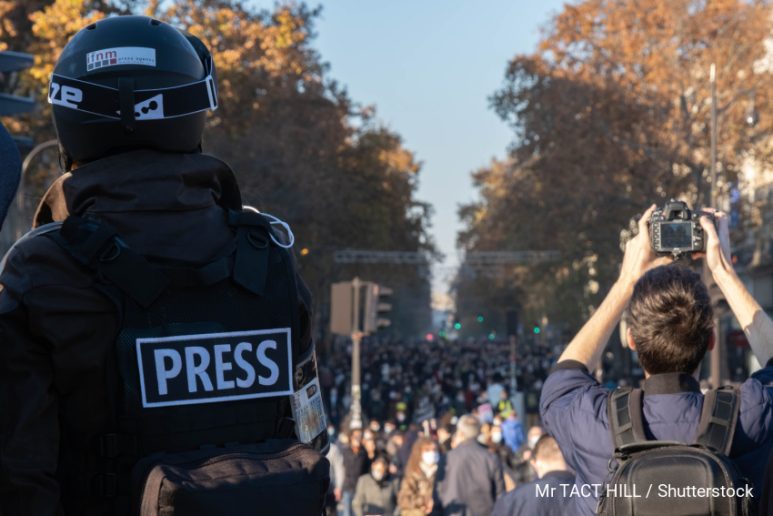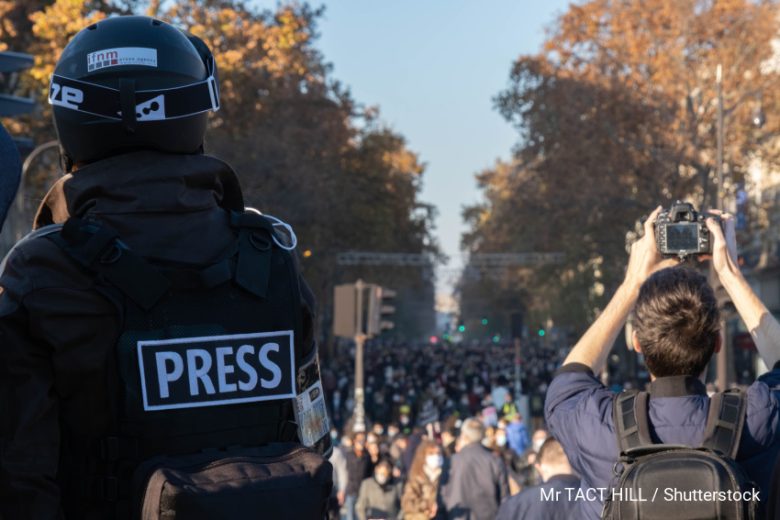By Anmol Irfan
When the Qatari Emir placed a traditional bisht on Lionel Messi following Argentina’s World Cup win, I was already expecting the backlash that followed. The continuing trend for Western media to criticise anything that is not familiar to them has been far too common to assume that this time would be any different. The World Cup as a whole has been no exception and voices across the globe have come together to criticise how the Western gaze often picks and chooses what it is they need to take a stand for. The usurping of the narrative by Western media has made it difficult for those in the region to talk about their own lived experiences.
“As someone who did experience personal injustice and grievances in Qatar I’m aware that Western media outlets only wanted me to talk publicly about my traumas to fit their agenda. On the other hand Qatar is not the victim here and for those who have suffered injustices there this was the first and only opportunity to be heard and for the world to be made aware of the human rights abuses they’ve experienced – so it’s a Catch 22 situation,” author Yousra Samir Imran tells MDI.
Whether it is the racist approach to what has possibly been the most diverse World Cup we have ever seen, to speaking over the voices of local communities, nothing that has happened in this World Cup is particularly new. Western media has had a long history of selective activism, one that is shown itself time and time again whenever a human rights movement erupts anywhere outside of the Western sphere.
“The world works in a way that only certain people have the power to write stories. Historically, marginalised people have not had the chance to tell their stories, and even though that’s changing, the stories that tend to get the most attention often come from legacy outlets and legacy journalists,” journalist Devyani Nighoskar who also works in advocacy tells MDI.
Even when it comes to the media attention that situations like Iran and Afghanistan – particularly with regards to the gender justice movements in the country – it often happens that outside opinions and solutions are a lot more prevalent than the voices of those most affected.
Media consultant and former BBC journalist Aaqil Ahmed points out that attributing these trends and the media’s approach in this way to the media outlets being racist, is too simplistic.
“Who chooses what stories are important? It’s complicated. Sometimes it’s political expediency, sometimes it’s prejudice, but most of the time it’s about what the audience is interested in, and then you question why the audience is interested in it,” he says.
More than the bias of a specific journalist, the general trend of selective activism in media should be leading us to question why certain stories get so big in the first place. Why is it that Iran is getting so much solidarity – and rightfully so – but Muslim women in India are not seeing the same? How is it that South Asians can see fit to put #BlackLivesMatter in their bio without ever questioning the colourism and racism prevalent in South Asian society that still impacts so many in the region?
Gender justice movements have been a huge focus for global media and yet so much of the global narrative has been focused around white saviour narratives. Critics have perhaps rightfully challenged the Western narrative around Afghanistan, talking about how if Afghan women truly needed the West’s help to succeed, more progress would have been made to help create systems for them to be independent under previous administrations. Ahmed says hypocrisy in the media also shapes coverage. “What gives you the right to talk about Iran without fixing what’s happening in your own country?”, but he also adds that this hypocrisy has become a common part of media coverage because media organisations run as businesses, and sensationalised stories sell.
“I understand the economics of it even if I don’t like it, there’s economic decisions made of what we cover,” Ahmed says.
This kind of selective activism is then often found in local media in Global South countries, because so much of what they cover is influenced by global media trends. As a result, Nighoskar points out that both in Western media and in countries in South Asia, campaigns such as the #MeToo movement were dominated by the voices of upper class elite women, leaving little room for women from rural or low income backgrounds to share their lived experiences.
“That point did come up, but it took a while and while that is progress, we live in a world where we need things to happen faster and we still have a long way to go, the entire question is about who gets to represent whose voice,” she says.
In general, unless women from the Global South are being painted as helpless victims, there’s rarely constructive coverage for the work they do.
“I don’t think there’s enough representation at all about gender movements in the Global South – I was trying to write a story on how women are more aware of long-term solutions when it comes to climate change and focusing on Global South and it took me a long time to come to a news article on how a group in the Amazon was doing this,” Nighoskar adds.
Linking back to the recent example of Qatar, Ahmed also says that much of the attacks or bias we see comes from the fact that every time something happens that challenges stereotypes, it is challenging the privilege that white Westerners have felt.
“It’s a complicated thing, it’s not racism, it’s just telling the story from the perspectives of the winner,” Ahmed tells MDI.
“For example, if we look at how contributions of black and brown people in the British army were ignored, at the end of WWI they were still occupying these countries so they wouldn’t say we had help from these people,” he continues.
For Nighoskar the answer lies in shifting media towards a solution-oriented approach.
“The more negative a media is, the more sensational it is, all media needs to be solutions focused. So, I recommend people picking up the problem and suggesting solutions. When they do highlight solutions, I don’t think they ask the people what solutions they want. Lots of eurocentric solutions, a lot of focus on aid when really we need solutions where people are resilient not dependent on aid,” she says.
Photo Credits: Mr TACT HILL / Shutterstock


